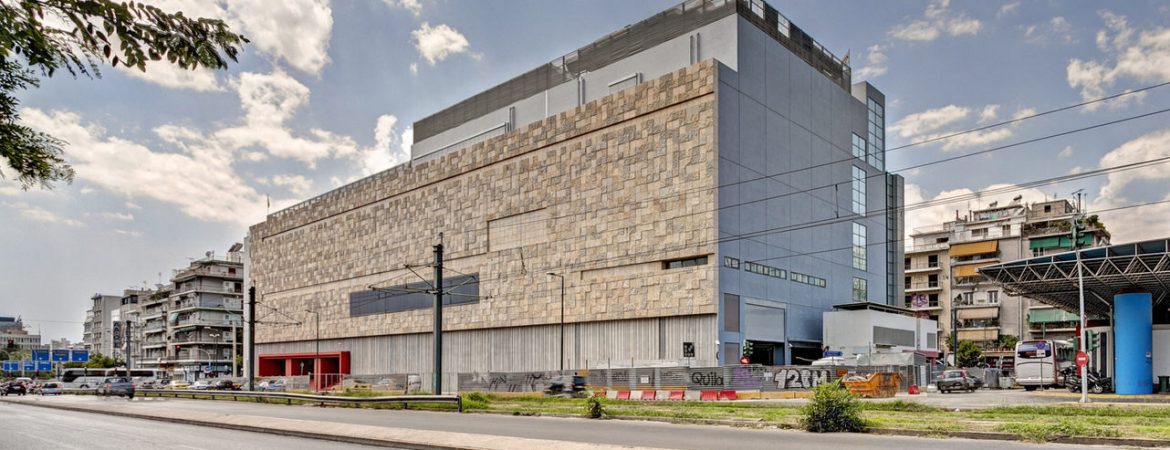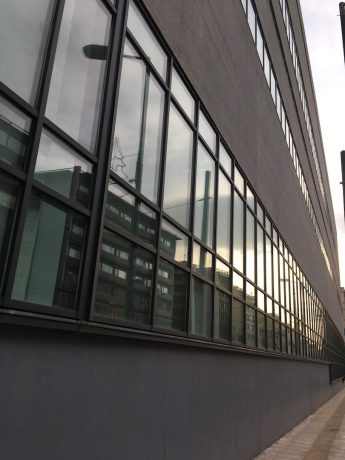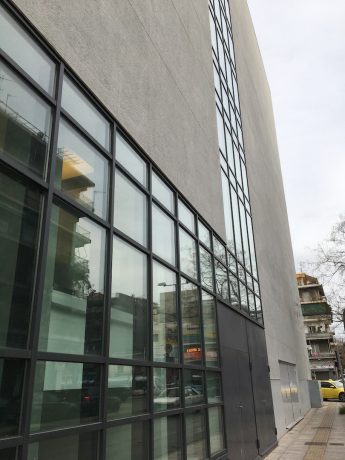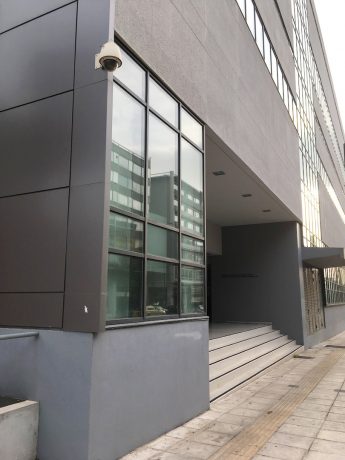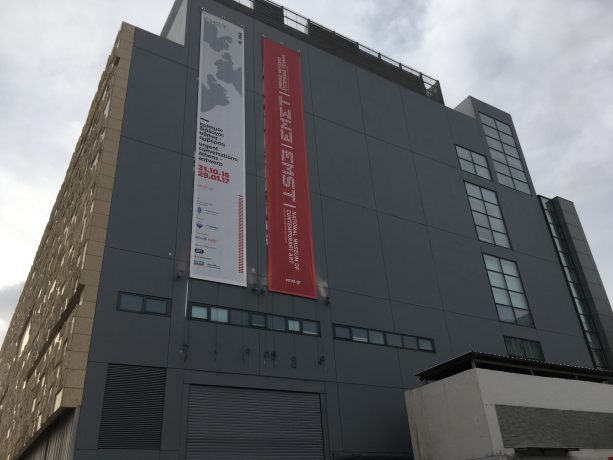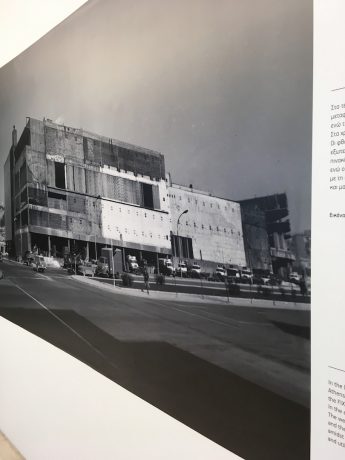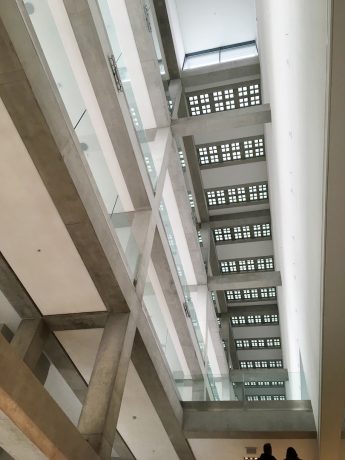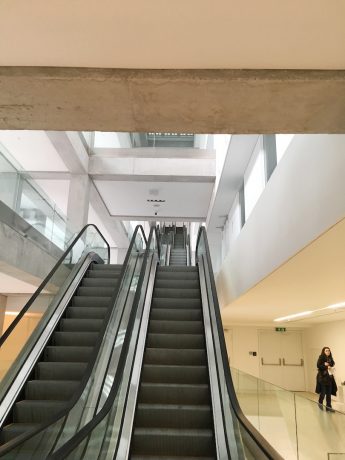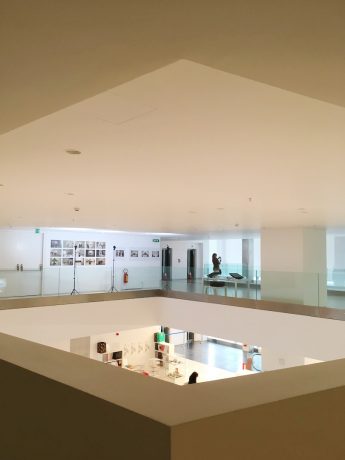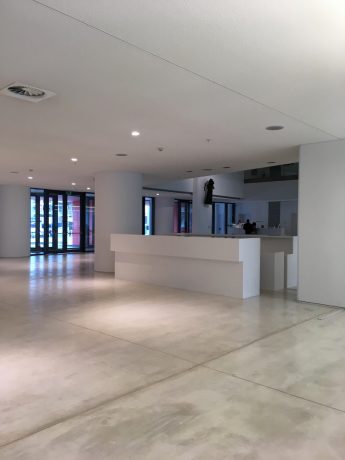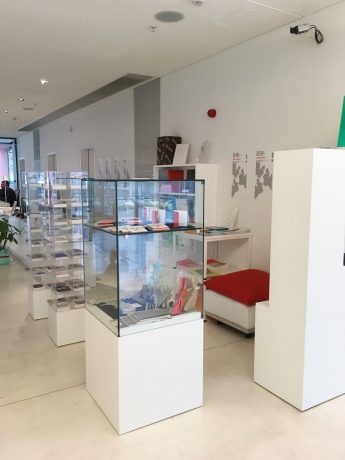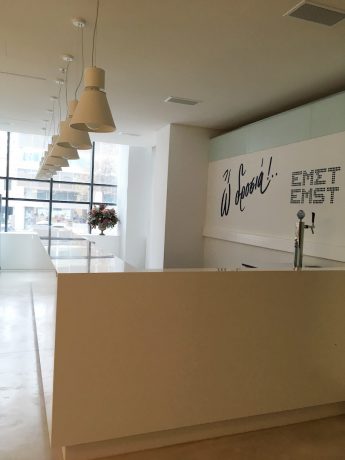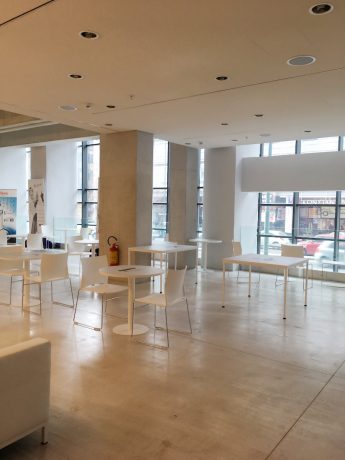Some museums design their own space, but others find their home in pre-existing buildings. In the latter category falls the National Museum of Contemporary Art (EMST) in Athens. EMST was given the space of an abandoned factory near the center of Athens and the museum transformed it into one of the most exciting places to visit in the city.
The National Museum of Contemporary Art was established in 2000 and, until 2003, it was located in the ground floor of an old brewery. It became the only national institution in Athens focused on international and Greek contemporary art. From 2003 to 2008, it was housed in the Athens Concert Hall. Then, up until 2015, the museum was located in various sections of the Athens Conservatory. EMST started its new period in 2016 when it first opened its doors to the public with some special events during the International Museum Day and the European Music Day housed in the restored FIX brewery.


A permanent collection is not something you will see here soon. The museum will operate with temporary exhibitions until it has fully solved its main issue with lack of funds (it is a public museum) and lack of staff. In the past, when the museum was housed in other buildings, people could get a glimpse of the collection including works by Greek and international artists from 1950s up until now. It expands from paintings, sculpture, photography to video or “experimental” architecture. Among the acquisitions, there are works by prominent artists: Marina Abramovic and Ulay, Andreas Angelidakis, Stephen Antonakos, Constantin (Dikos) Byzantios, Vlassis Caniaris, Chryssa, Mona Hatoum, Gary Hill, Emily Jacir, Ilya and Emilia Kabakov, Nikos Kessanlis, Jannis Kounellis, Shirin Neshat, Yiannis Psychopedis, Lucas Samaras, Costas Tsoclis, Bill Viola, Robert Wilson to name a few.
Despite the obstacles it faced, EMST opened to the public with its first exhibition Urgent Conversations: Athens – Antwerp in October 2016. This exhibition was co-curated by EMST’s director, Katerina Koskina and the director of the Museum of Contemporary Art in Antwerp, Bart De Baere. It is a dialog between the two museums about art and its ability to transmit new meanings and pose questions, both to the world and to Europe where dialog phase has been skipped and everyone is ready to fight. The exhibition gives the audience much to think about. Its design is simple and easy to comprehend with various engaging sections sparking a conversation; however, in this article we will focus on the building itself.
The history of the building
The museum is located in Syngrou Avenue in the building that once was the famous FIX brewery. The building itself was an important landmark of architectural and sociological significance for the Athenians. The FIX family bought the building in the late 19th century in an area in Athens that was not yet populated and was close to the archaeological site of the Temple of Zeus and the Ilissos River. It was used as a brewery (FIX is a brand of a well-known Greek beer). With the 1950s industrial boom in Greece, the FIX family decided to redesign the building in order to keep up with the needs of the company; it was completed in 1961 by architect Takis Zenetos. The building was a great example of post-war modernism with clear line and openings and stood out in all aspects. After the late 1970s, the building was abandoned by the company and started decaying in the following years. In 1994, due to the construction of the metro lines the building was partially demolished and after renovation of some floors, it went back in use; the Ministry of Culture co-organised with the Yannis Tsarouchis Foundation an exhibition and then it was given to EMST.
The building was reconstructed by 3SK Stylianidis Architects, I. Mouzakis & Associate Architects, Tim Ronalds Architects and K. Kontozoglou as an associate of 3SK after an architectural competition to match the needs of the museum. The original façades on Syngrou Avenue and Frantzi Street were kept because they are protected monuments; the other side was inspired by the Ilissos River that is buried under the Kallirrois Avenue. The surface resembles a “rough” ground of marble near a waterfall, while the last side opposite the metro looks like a surface that has not been finished, a node to the other part that was demolished.
Inside the new space
Visitors can enter the museum in two ways: via the main entrance on Kallirrois Avenue or the other one on Syngrou Avenue. These two entrances create a diagonal path. Inside, one can feel the symmetry and the minimal aesthetic of an industrial building.
There are elevators and escalators that lead to the upper floors and the basement. The escalators move parallel to Syngrou Avenue, creating an astonishing effect. The public has access to the ground floor, the basement and the first floor, but other floors still remain to be seen. The interior is white and clean and the spaces are large and open. On the ground floor, there are reception areas, a café and a small gift shop. The café is behind the Syngrou Avenue façade and huge glass windows allow visitors to drink their coffee or their beer (since the café is sponsored by FIX) while watching the traffic.
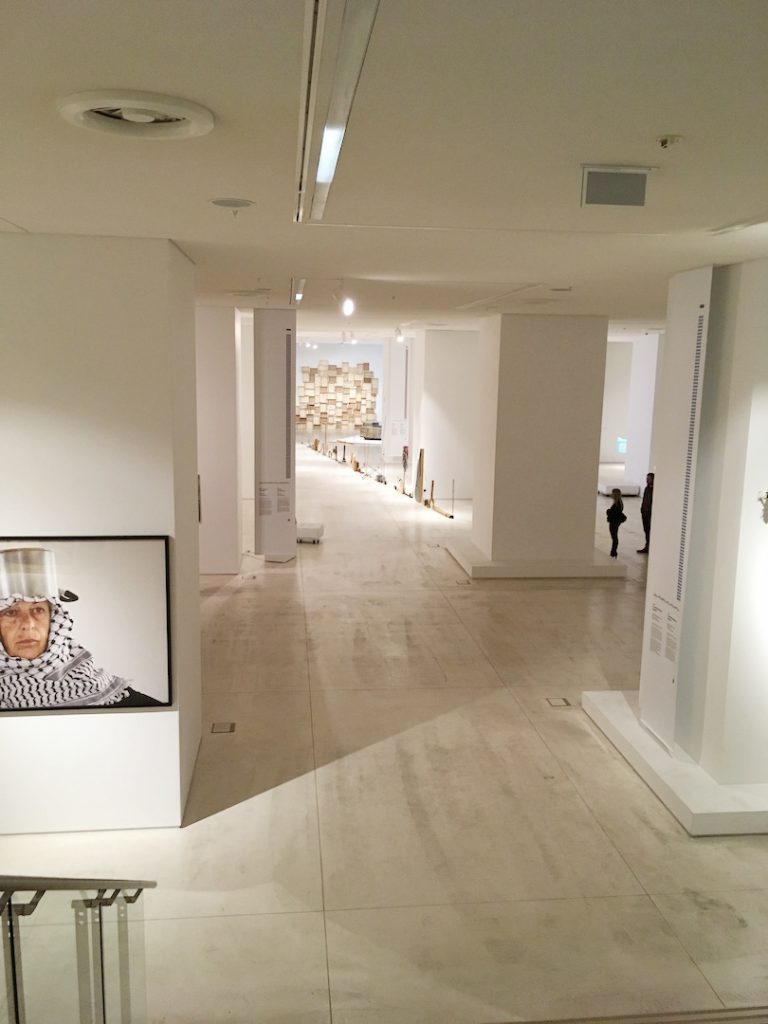
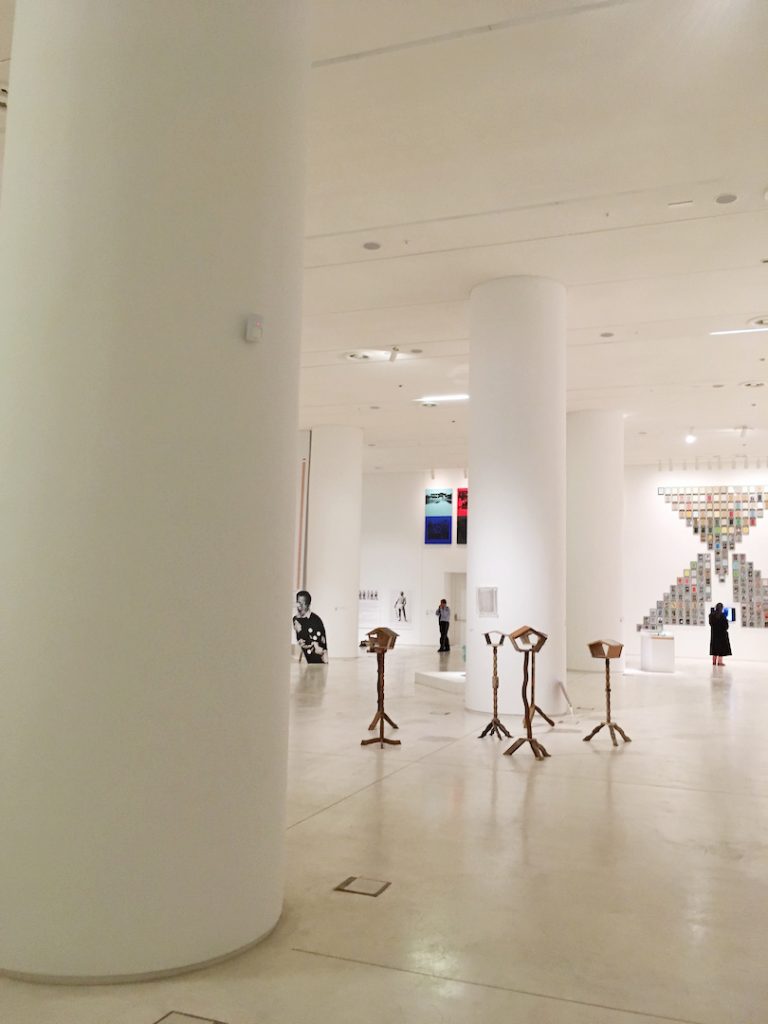
It is said that two or more floors currently not open to public will be housing the permanent collection. The remaining spaces will be used for temporary exhibitions, educational programs, events, media lounge, etc. Lastly, the roof of the building opened in the summer of 2016 during a series of events allowing the public to take a glimpse of the spectacular view.

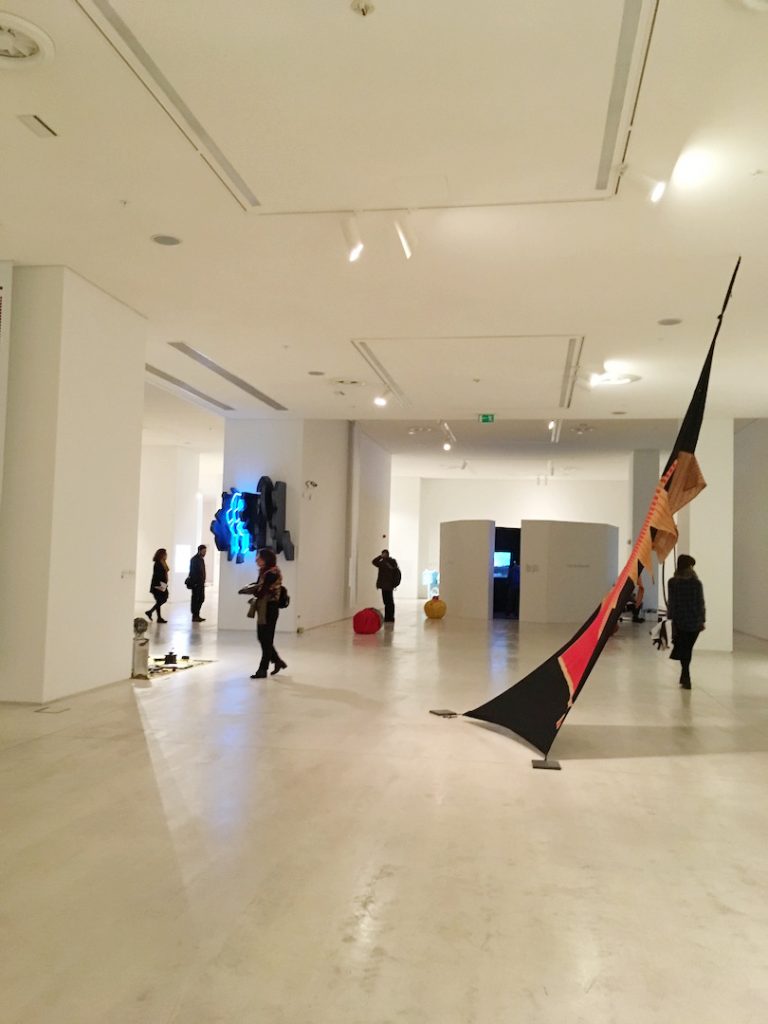
EMST is a promising museum and the local art scene always anticipates its next move. It definitely is one of those rare institutions that will have an active role in transforming the artistic landscape of Athens in the near future.
